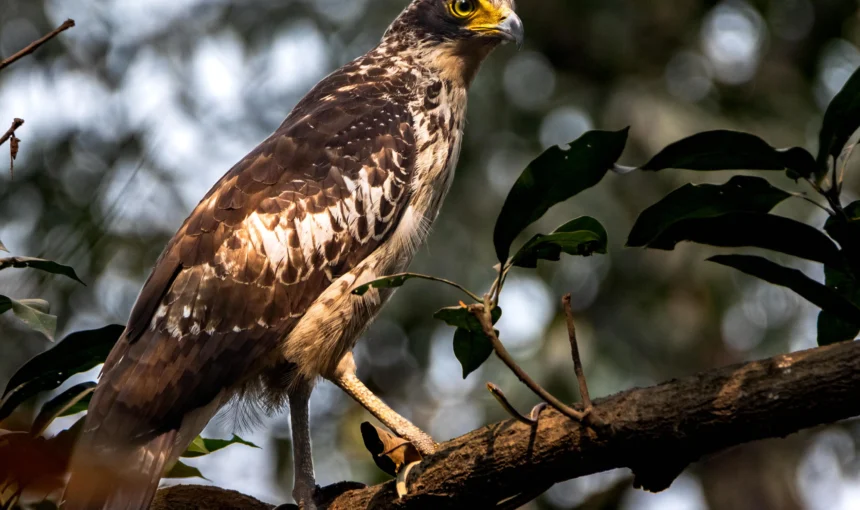The Sundarbans has the largest mangrove forest in the world. It goes over the delta of the Ganges, Brahmaputra, and Meghna rivers and is in parts of India and Bangladesh. This UNESCO World Heritage Site is remarkable for more than only its plants and creatures that are not found anywhere else. There are 260 species of native birds in the Sundarbans. These birds are particularly crucial for sustaining the balance of this ecosystem.
In the Sundarbans, you can find a lot of various kinds of birds.
There are a lot of plants and a complicated system of tidal canals, mudflats, and small islands in the Sundarbans, which makes it a perfect area for many kinds of birds to reside. This place is safe for birds that live here and birds that are just passing through. There are beautiful birds of prey flying above and waders that are hard to find wandering along the muddy shore.
The Kingfishers: Jewel-Toned Predators
The Sundarbans is home to many distinct kinds of kingfishers, which are among of the most well-known birds in the area.
• The Brown-winged Kingfisher (Pelargopsis amauroptera): is a lovely bird with a bright orange head, blue wings, and a bold red bill. It only dwells in the mangroves of Southeast Asia. It’s hard to find since it’s shy, even if it looks bright.
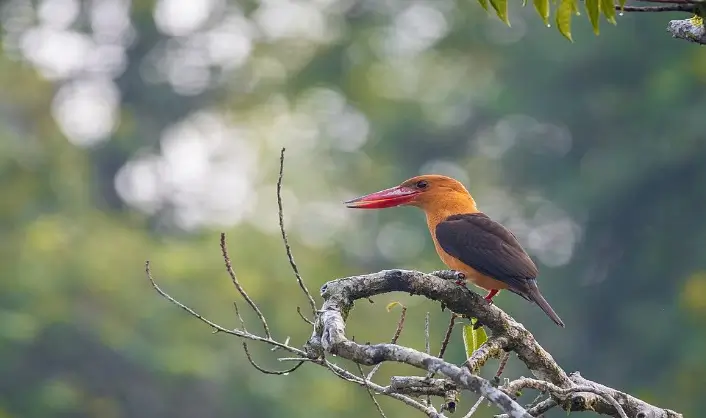
• The Black-capped Kingfisher (Halcyon pileata): The head of this bird is shiny black, the wings are bright blue, and the bill is bright red. People commonly see it sitting on rivers and streams, waiting for fish to catch.
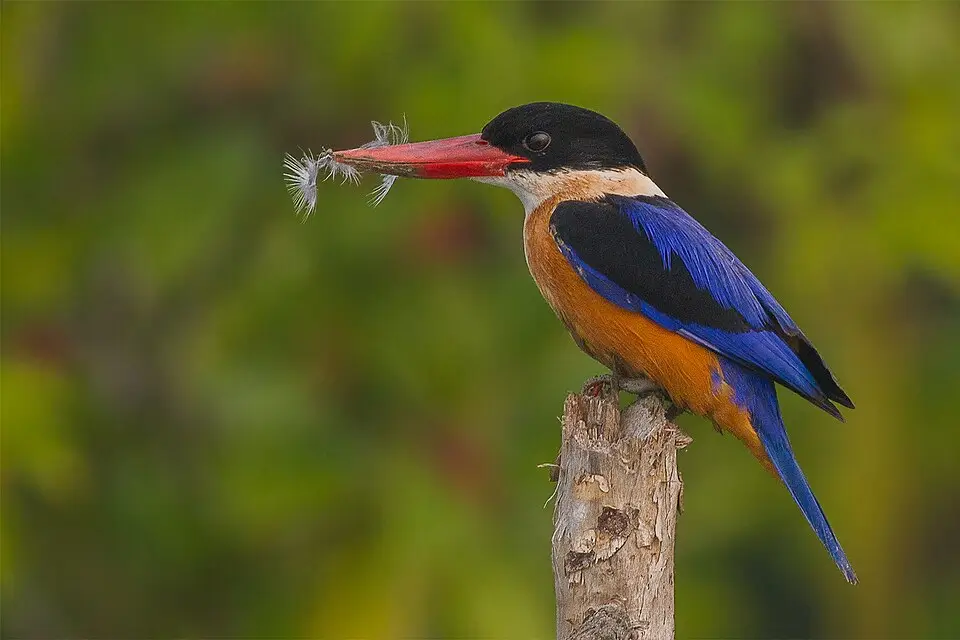
• There are a number of Collared Kingfishers (Todiramphus chloris) in the Sundarbans. The collar is white and the back is turquoise. You can usually observe it close to the shore and in mangroves.
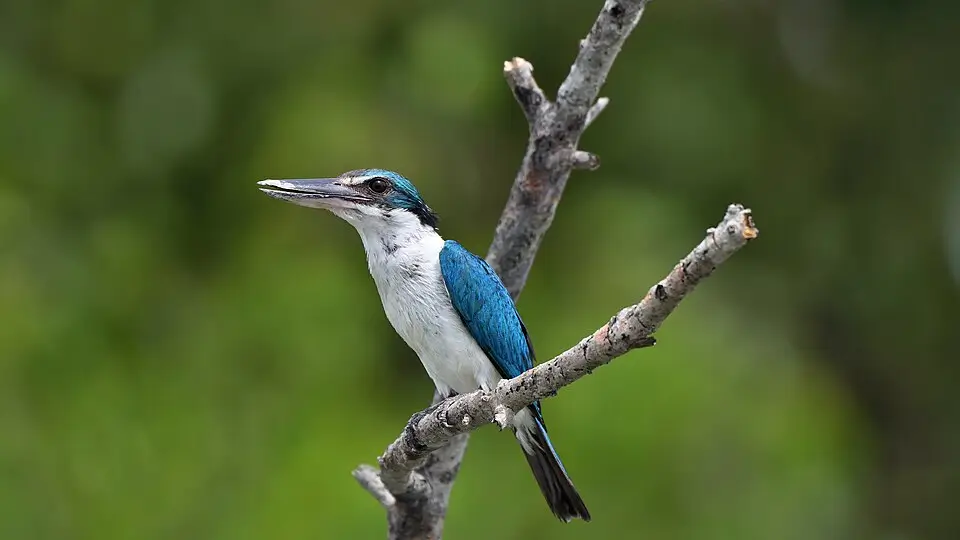
Raptors: Guardians of the Sky
The Sundarbans are home to many formidable birds of prey that watch the skies.
• Brahminy Kite (Haliastur indus): The head of this bird of prey is white, while the body is chestnut. It often floats gracefully over the mangroves, where it supports the ecosystem by eating dead fish and keeping the population of fish down.
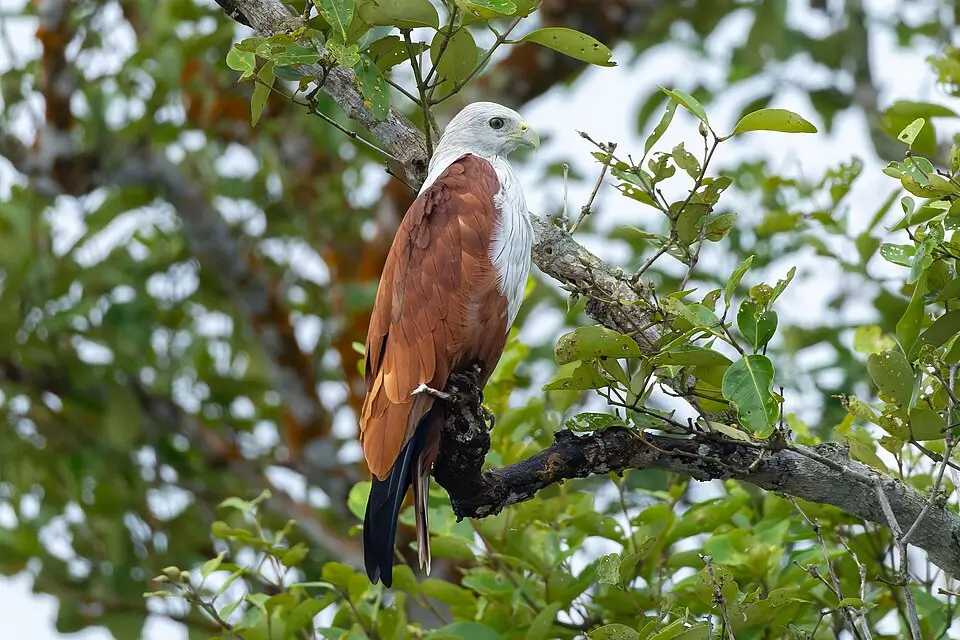
• The White-bellied Sea Eagle (Haliaeetus leucogaster) is a formidable predator that sticks out because of how it looks. It eats fish and other sea animals, which helps keep the aquatic ecosystems in the Sundarbans in check.
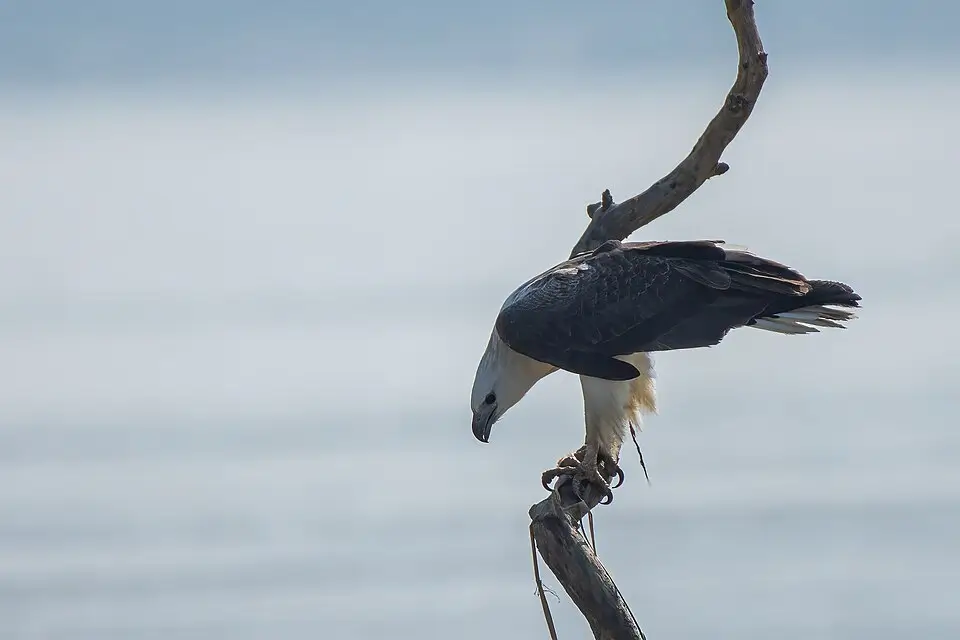
Waders and shorebirds are birds that look for food on the beach.
The Sundarbans’ vast mudflats and shallow waters attract many kinds of wading birds.
• Lesser Adjutant Stork (Leptoptilos javanicus): This huge stork is considered to be feeble and is often seen in wetlands, where it consumes fish, amphibians, and crustaceans. This shows how vital it is for the world to be in balance.
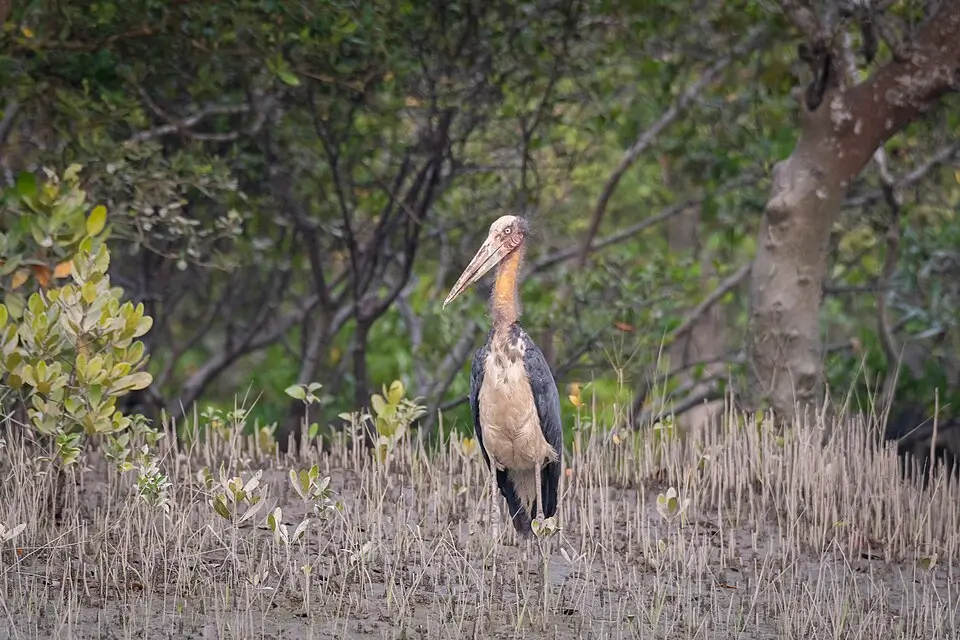
• The Common Redshank (Tringa totanus): This shorebird comes to the Sundarbans in the winter and may often be seen searching for crabs and other small animals in the mud along the beach.
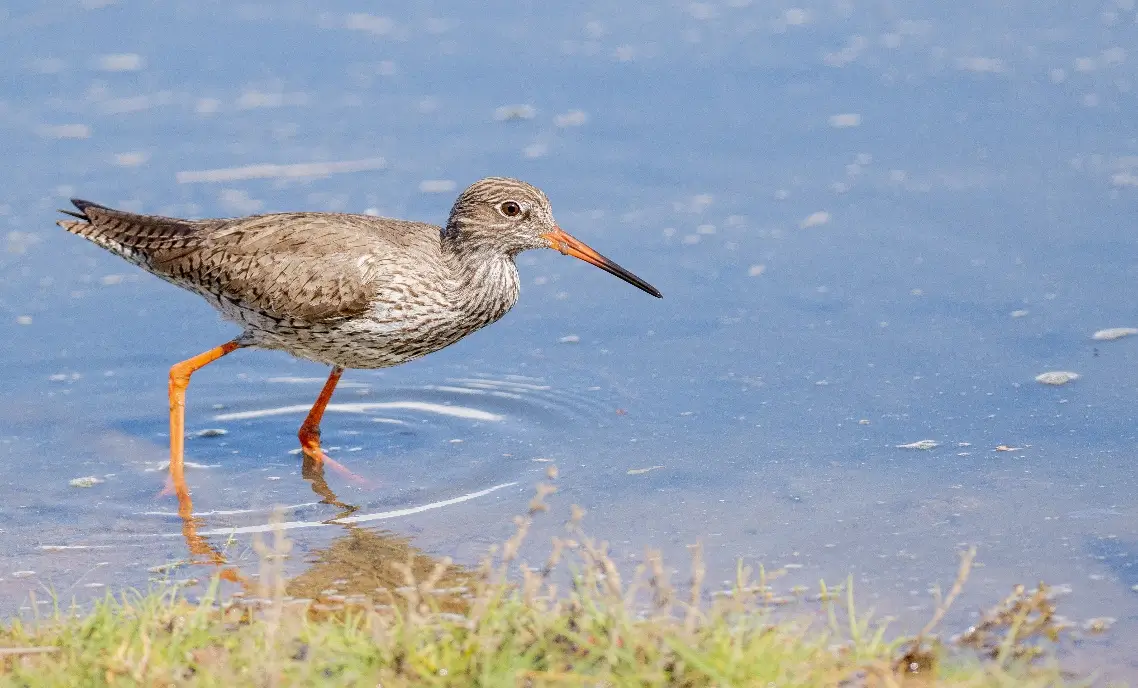
The Classy Stalkers: Egrets and Herons
In the Sundarbans, you can commonly spot these birds wading:
• The Great Egret (Ardea alba) is a large heron that is all white, with black legs, and a yellow bill. It can grow to be 1 meter tall. People commonly see it hunting fish in the shallow waters of the Sundarbans.
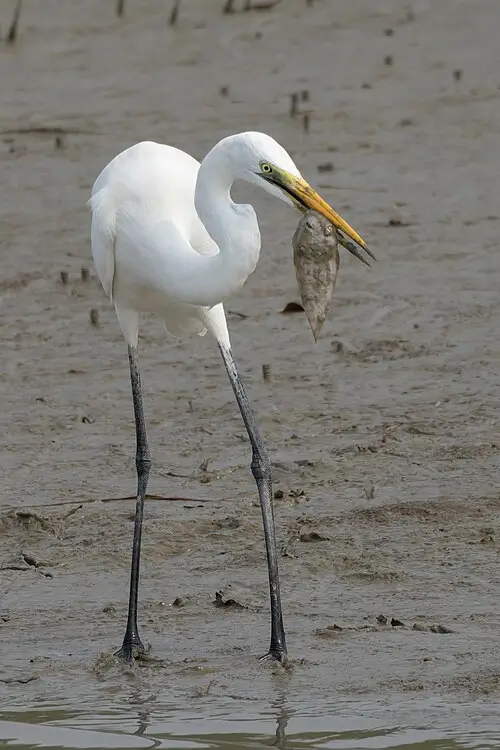
• Black-crowned Night Heron (Nycticorax nycticorax): You can usually encounter this bird at night near water. Its back is bowed, and its eyes are brilliant red. At night, it hunts fish, frogs, and other small animals that live in water.
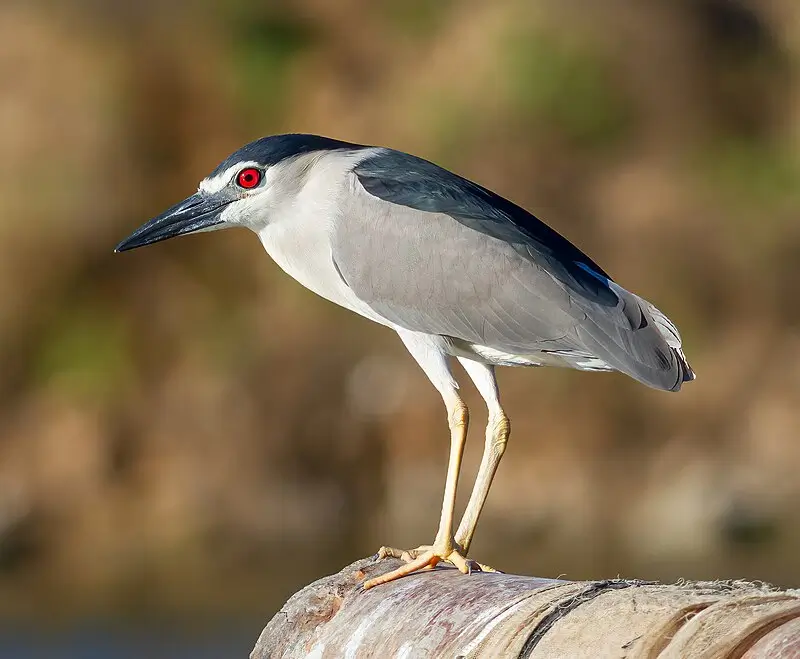
Species that are rare and hard to locate
There are also a few rare and hard-to-find birds in the Sundarbans:
• Masked Finfoot (Heliopais personatus): This is one of the most uncommon birds in the Sundarbans. It’s hard to find because it likes to lurk in small rivers and thick mangrove trees. Birdwatchers love it because its face has unusual white patterns and its feathers are black.
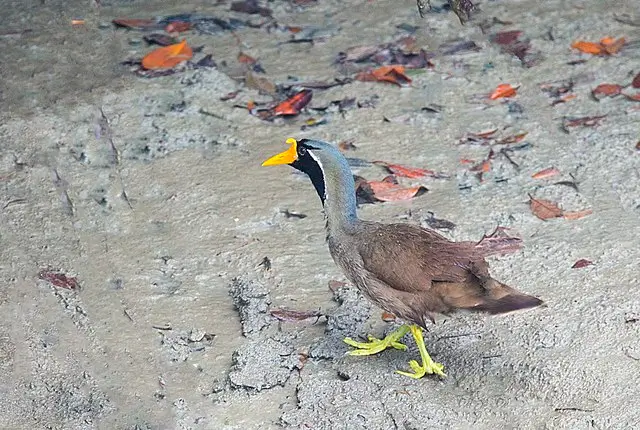
• Mangrove Pitta (Pitta megarhyncha): It’s hard to find this pretty bird because it lives in mangrove areas. It has a red belly, a buffy breast, green wings, and a bright blue patch. People often notice it bouncing about on the ground in the woods as it seeks for crabs and bugs.
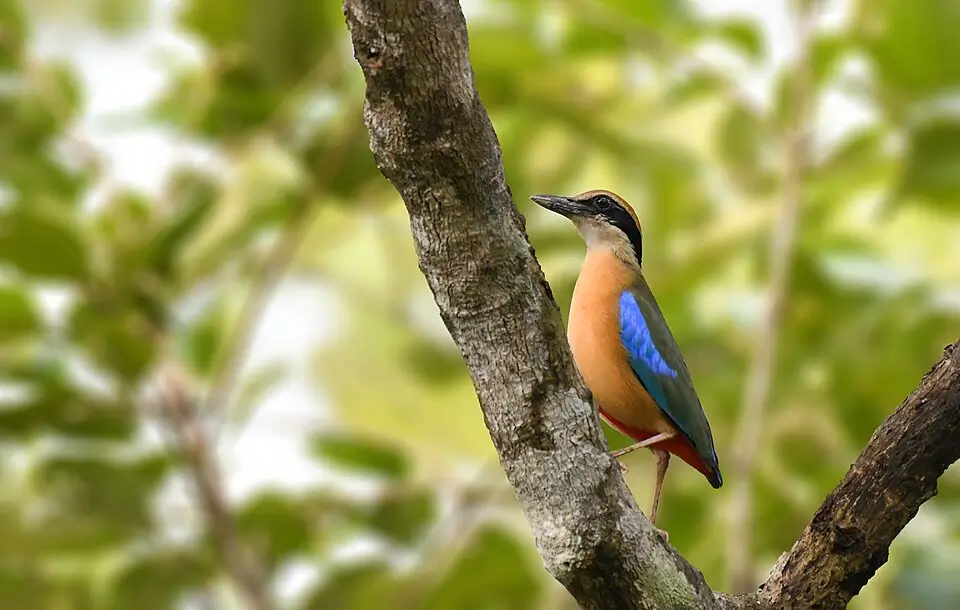
Environmental issues and measures to safeguard them
The Sundarbans is home to many different kinds of birds, but it is also hard to protect them. Climate change, humans cutting down trees, and people moving into their homes are all threats to birds. There are a lot of birds that are in danger, like the Lesser Adjutant Stork and the Masked Finfoot. People are doing things to make these birds safe, like fixing up their homes, making it against the law to hurt them, and persuading people to care about keeping them safe.
Bird watching in the Sundarbans
Bird lovers will love the Sundarbans. You may see these species in their natural habitat on guided boat cruises through the complicated rivers. Birds are most active in the early morning and late afternoon, so these are the best times to watch them. To keep the ecology safe, visitors must follow the rules and not bother the creatures too much.
Conclusion:
The birds that reside in the Sundarbans are an excellent example of how varied and rich this environment is. Kingfishers, eagles, and pittas are just a few of the uncommon wildlife that live in this mangrove forest. It’s very vital for the health of the Sundarbans and the balance of the whole ecology to take care of these birds.
As we learn more about these magnificent birds and fall in love with them, we need to assist safeguard them and conservation efforts. This will help make the Sundarbans a safe location for birds and source of wonder for generation to come.

